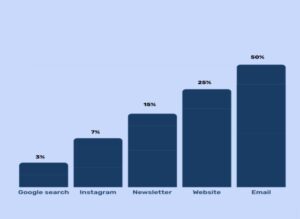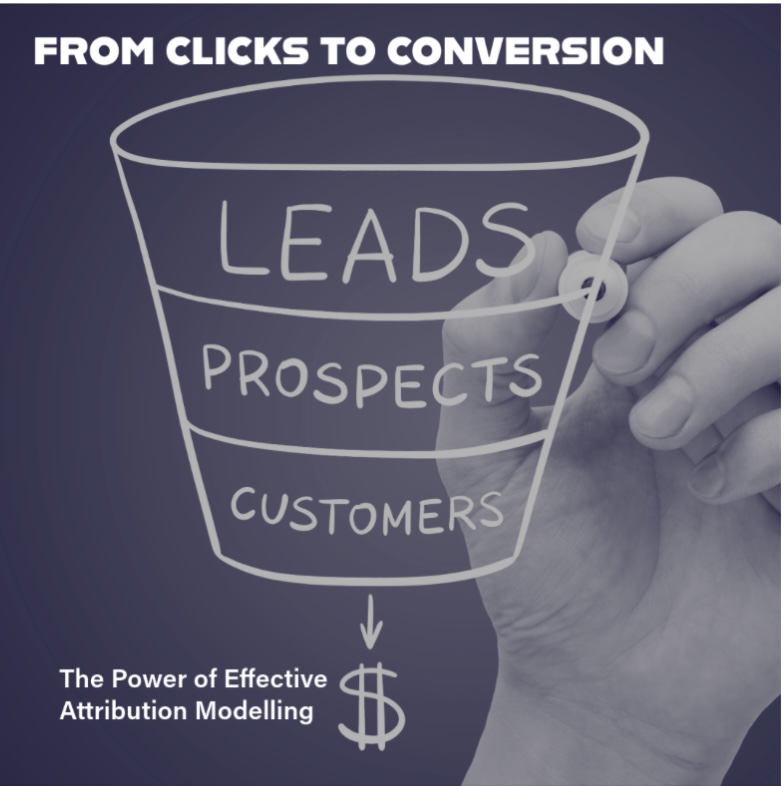…written by Aderinsola Ogunbiyi, Marketing Lead for Nigeria, Turaco
Running marketing campaigns across digital channels like emails, social media, and blogs is one thing; turning those efforts into sales is another.
For any business, the ultimate goal is to generate revenue, not just to have a digital presence or execute campaigns.
Achieving this requires potential customers to pass through several touchpoints before deciding to sign up, download an app, or make a purchase. It’s always rewarding in marketing when a visitor finally converts, signaling that one or more of your marketing channels worked effectively.
But the journey doesn’t stop there. As a business owner or marketer, it is important to analyze which marketing channel prompted that conversion. This insight allows you to allocate more resources to the most effective channels, optimizing them further to drive leads that convert into returning customers.
Wondering how to track this effectively?
That’s where Attribution Modeling comes into play. This article provides a breakdown of Attribution Modelling, including the different types and the importance of using effective attribution models for marketing strategies. Let’s get right into it.
What is Attribution Modelling?
Attribution modelling is a marketing analytics method used to evaluate how different marketing channels and touchpoints contribute to a sale or conversion. It helps determine which advertising efforts or customer interactions (e.g., email campaigns, paid search) played an important role in driving a person to take action. By analysing these interactions, businesses can identify which channels are most effective and allocate resources more efficiently to maximise return on investment (ROI). For instance, a customer might engage with an email, click on a social media ad, and eventually complete a purchase through a paid search ad. Attribution modelling assigns credit to each of these touchpoints based on their influence in the customer’s journey. This insight not only helps marketers understand the influence of each interaction and which marketing efforts are most valuable but also helps them optimise future marketing strategies accordingly.
Types of Effective Attribution Modelling
There are several types of Attribution Modelling used these days. Here are few ones we’ll talk about:
1. First-Click Attribution Modelling:
First-click attribution is a single-touch attribution model that gives 100% of the credit to the first touchpoint a customer interacted with. It focuses on the beginning of the customer’s journey based on the idea that the initial channel that introduced the customer plays a significant role in influencing the customer toward further engagement with the product or brand, eventually leading to a conversion.
Let’s take Spotify, the popular music streaming platform, as an example. Imagine they’re running a campaign to increase premium subscriptions, using channels like Instagram ads, native ads, and email marketing. Teju, a potential customer, first comes across Spotify through an Instagram ad highlighting the benefits of a premium subscription. Intrigued, she clicks on the ad and explores Spotify’s website but doesn’t subscribe right away. A few days later, she reads a blog post about curated playlists, and finally, she receives an email offering a 3-month free trial of Spotify Premium, which prompts her to sign up.
With first-click attribution, 100% of the credit for Sarah’s subscription would be attributed to the Instagram ad, as it was her initial point of contact with Spotify. Even though she interacted with other touchpoints along her journey, this model prioritises the first interaction, viewing it as the key driver of Sarah’s initial interest in the brand.
2. Last-Click Attribution Modelling:
Unlike First-Click, Last-Click Attribution gives 100% of the credit for sale or conversion to the final touchpoint which a customer interacted with before making a purchase. This model focuses on the last step in the customer’s journey, based on the belief that the final interaction played the most decisive role in converting the lead into a customer. For example, Apple is promoting its latest iPhone model, iPhone 16, through various marketing channels. Daniel first learns about the new iPhone through a Google search ad. He clicks on it and browses the product page but doesn’t make a purchase. The following week, he sees an Instagram ad for the iPhone, clicks on it, and takes a closer look at the features on Apple’s website. Still undecided, he signs up for Apple’s newsletter. The next day, Steve receives an email offering a limited-time discount on the iPhone 16. Motivated by this offer, he clicks the link in the email and completes the purchase.
Using the Last-Click Attribution model, 100% of the credit for Daniel’s purchase is given to the email campaign, as it’s considered the decisive factor in his buying decision.
While both First-Click and Last-Click models emphasize a single touchpoint, one focuses exclusively on the initial interaction, while the other prioritizes the final step -both ignoring the rest of the customer journey.
3. Time Decay Attribution Modelling
The Time Decay Attribution model takes a different approach compared to First-Click or Last-Click models. Rather than focusing solely on a single touchpoint, this model assigns more credit to touchpoints that are closer to the conversion, while still acknowledging the role of previous interactions along the customer journey.
It operates on the assumption that recent touchpoints have a greater influence on the customer’s decision to make a purchase.
Let’s revisit Daniel’s journey to buy the new iPhone model. Over two weeks, Daniel interacts with six touchpoints: a Google search ad, an Instagram ad leading to website exploration, an email newsletter, a Facebook retargeting ad, and finally, a limited-time discount email. In the Time Decay Attribution model, credit is distributed across all six touchpoints, but with increasing weight given to the most recent ones.
For example, the final discount email might receive 50% of the credit, the Facebook ad 25%, the newsletter 15%, the Instagram ad and website visit 7%, and the initial Google search ad 3%. This model recognizes the cumulative impact of all marketing efforts while emphasising the stronger influence of recent touchpoints in driving conversions.

Screenshot
4. Data-Driven Attribution Modelling
Data-Driven Attribution Modelling differs from other attribution models because it gives credit to the various touchpoints in a customer’s journey based on their actual contribution to a conversion -whether it’s a sign-up, purchase, or any other action.
Unlike the First-Click or Last-Click models, which give all the credit to a single touchpoint, Data-Driven Attribution uses data from tools like Google Ads and Google Analytics to analyze the impact of each touchpoint.
In the Data-Driven Attribution model, each of these touchpoints would receive a share of the credit, with the proportion determined by how much each interaction contributed to Daniel’s decision.
By relying on actual data and insights, this helps businesses better understand the effectiveness of each marketing channel and enables marketers to proportionally distribute credit based on the role each interaction played in the customer’s journey.
Which Attribution Model is More Effective?
While each attribution model can be effective and offers its unique advantages, selecting the right one is essential for accurately tracking your marketing efforts and measuring the return on investment (ROI) of your campaigns. The goal isn’t to rely on one perfect model but to use a combination of models to achieve effective marketing results.
As marketing continues to evolve, so must your approach to attribution. The future of attribution modelling will likely involve more sophisticated, AI-driven models that can handle the complexity of modern customer journeys and change in customer behaviours across multiple devices, channels and products, offering deeper insights and more precise measurement of marketing impact.
The big question here is: as marketing attribution evolves, how prepared is your strategy to keep up with these advancements? Embracing the right tools and models today could set your business up for greater success tomorrow.






Comment
No comments found.